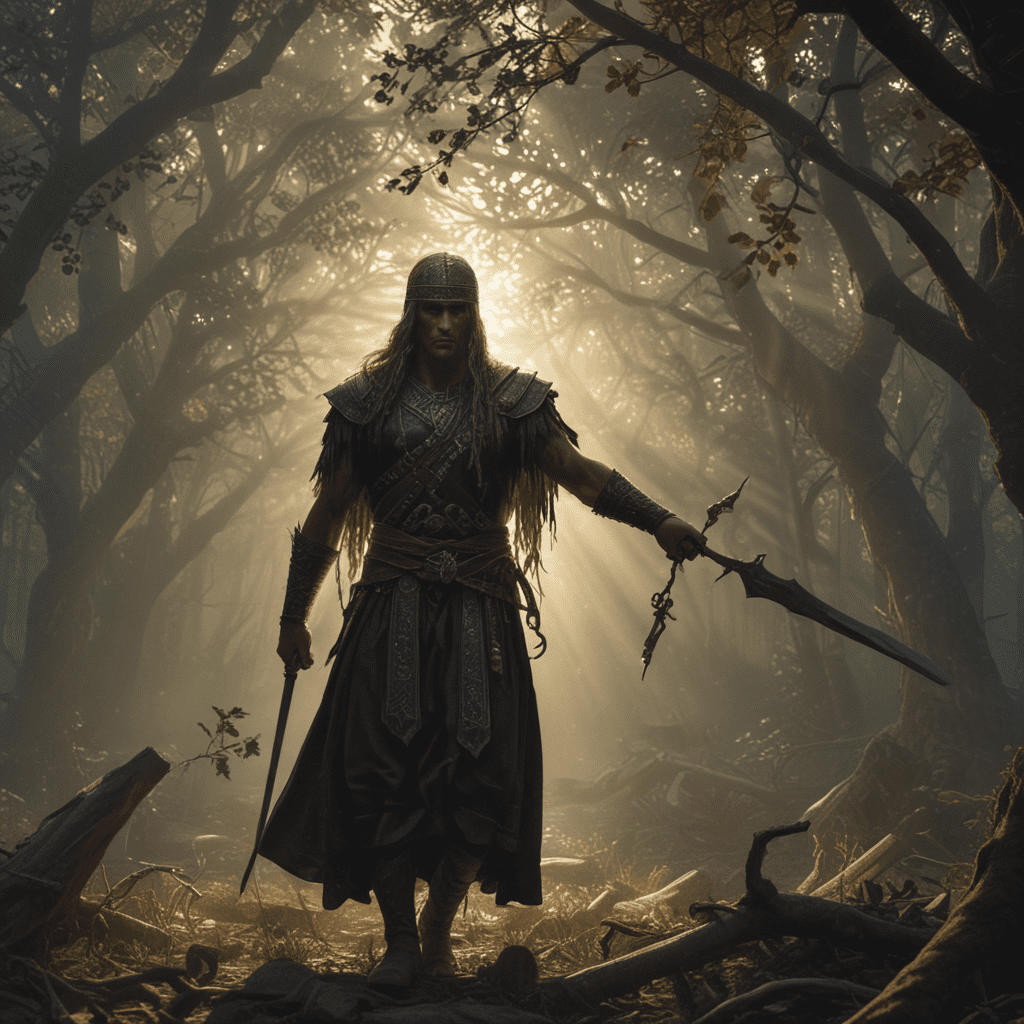The Symbolism of Shadows in Slavic Mythology
Introduction
Shadows hold a profound significance in Slavic mythology, embodying the realms of darkness and the supernatural. From ancient rituals to captivating folklore, shadows have been intricately woven into the fabric of Slavic beliefs and cultural practices. Their symbolism transcends mere visual obscurity, delving into the enigmatic depths of death, fear, and the connection between life and the otherworldly.
The Realm of Shadows
Nav, the Slavic underworld, is a realm of perpetual darkness where shadows reign supreme. It is believed that shadows serve as conduits between the world of the living and the realm of the dead, providing a passageway for spirits to interact with mortals. This connection imbues shadows with an ethereal quality, linking them to the supernatural and the unseen.
Shadows as Supernatural Entities
Slavic mythology is replete with shadow-like creatures that embody both fear and reverence. The Południca, a vengeful spirit of the midday sun, casts long, haunting shadows that portend misfortune. Conversely, the Strzyga, a female vampire, can manipulate her own shadow to assume the form of animals, wreaking havoc on those who cross her path. Such entities blur the line between the tangible and the intangible, adding depth to the symbolic realm of shadows.
Shadows as Metaphors for Evil
In Slavic mythology, shadows often embody the forces of darkness, fear, and deception. Evil beings are frequently depicted as casting long, menacing shadows that evoke a sense of dread. These shadows represent the hidden aspects of the human psyche, the darkness that lurks within, ready to ensnare the unwary.
Shadows as Guardians
Despite their ominous associations, shadows also play a protective role in Slavic mythology. The shadows of ancestors are believed to watch over homes and families, safeguarding them from harm. Rituals involving the creation of shadow effigies are utilized to ward off evil spirits and protect against malevolent forces. Shadows, in this context, become a symbol of resilience and the enduring bonds between the living and the departed.
Shadows as Portals
In Slavic mythology, shadows are believed to possess the ability to serve as gateways to other realms, including the underworld and the land of the dead. Certain rituals involved passing through shadows as a means of communicating with deceased ancestors and seeking their guidance. By traversing through the shadowy realm, individuals could gain insights into the mysteries of the afterlife.
Shadows and the Cycle of Life
Shadows play a significant role in Slavic mythology as symbols of death and the transition between worlds. During funerals and mourning rituals, special attention was paid to the shadows of the deceased, as they were believed to represent the departed soul's journey to the afterlife. Shadows served as a reminder of the impermanence of life and the interconnectedness of the living and the dead.
Shadows and the Elements
Slavic mythology establishes a profound connection between shadows and the elements of nature. Shadows are often associated with water, fire, and earth. Water, in particular, holds a symbolic relationship with shadows, as it can reflect and absorb them, blurring the boundaries between the tangible and the intangible. Fire, on the other hand, can cast long, dancing shadows that evoke both awe and mystery. Earth, as the realm of the dead, is closely entwined with the concept of shadows, as it is where the souls of the departed are believed to reside.
Shadows in Folklore
Slavic folklore is replete with tales and legends featuring shadows as both sinister and benevolent figures. In some stories, shadows serve as harbingers of misfortune or danger, while in others, they appear as protectors or guides. The ambiguity surrounding shadows in folklore reflects the multifaceted nature of this symbol, encompassing both the positive and negative aspects of human existence.
Conclusion
The symbolism of shadows in Slavic mythology is a complex and multifaceted phenomenon that permeates various aspects of Slavic beliefs and cultural practices. From their association with the realm of the dead to their role as metaphors for evil and guardians, shadows hold a profound significance in the Slavic worldview. Their enduring presence in folklore, rituals, and mythology continues to shape Slavic culture and inspire awe and contemplation among those who encounter their enigmatic embrace.
FAQ
Q: What is the significance of shadows in Slavic mythology?
A: Shadows play a crucial role in Slavic mythology, symbolizing darkness, the supernatural, evil, protection, portals to other realms, the cycle of life, the elements of nature, and various aspects of human existence.
Q: Are shadows always associated with negative forces in Slavic mythology?
A: No, shadows can embody both positive and negative forces. While they can represent evil and misfortune, they can also symbolize protection, guidance, and the connection between the living and the dead.
Q: How are shadows used in Slavic rituals and folklore?
A: Shadows are incorporated into rituals as protective effigies to ward off evil. In folklore, shadows appear as both sinister and benevolent figures, reflecting the multifaceted nature of this symbol.



